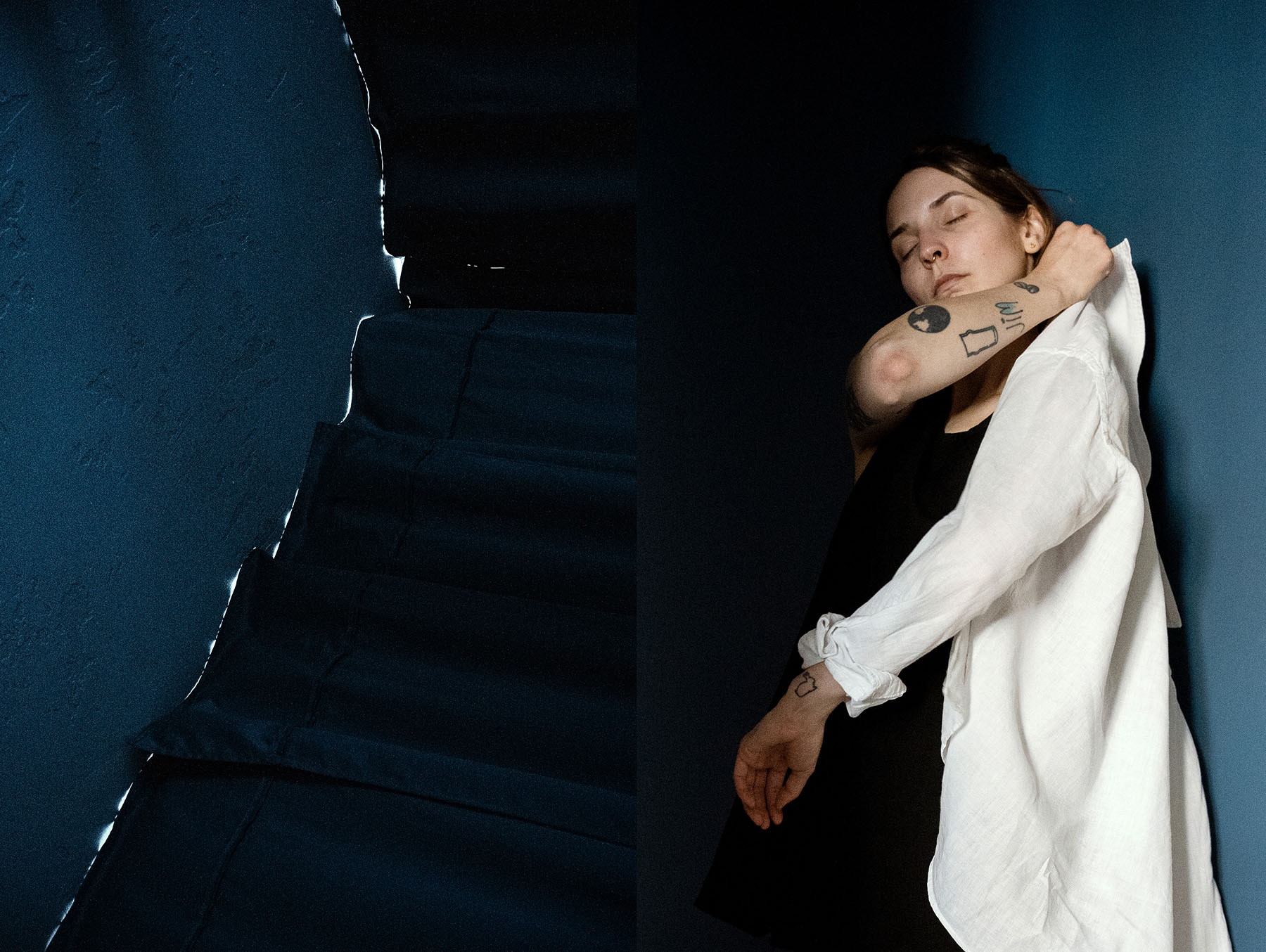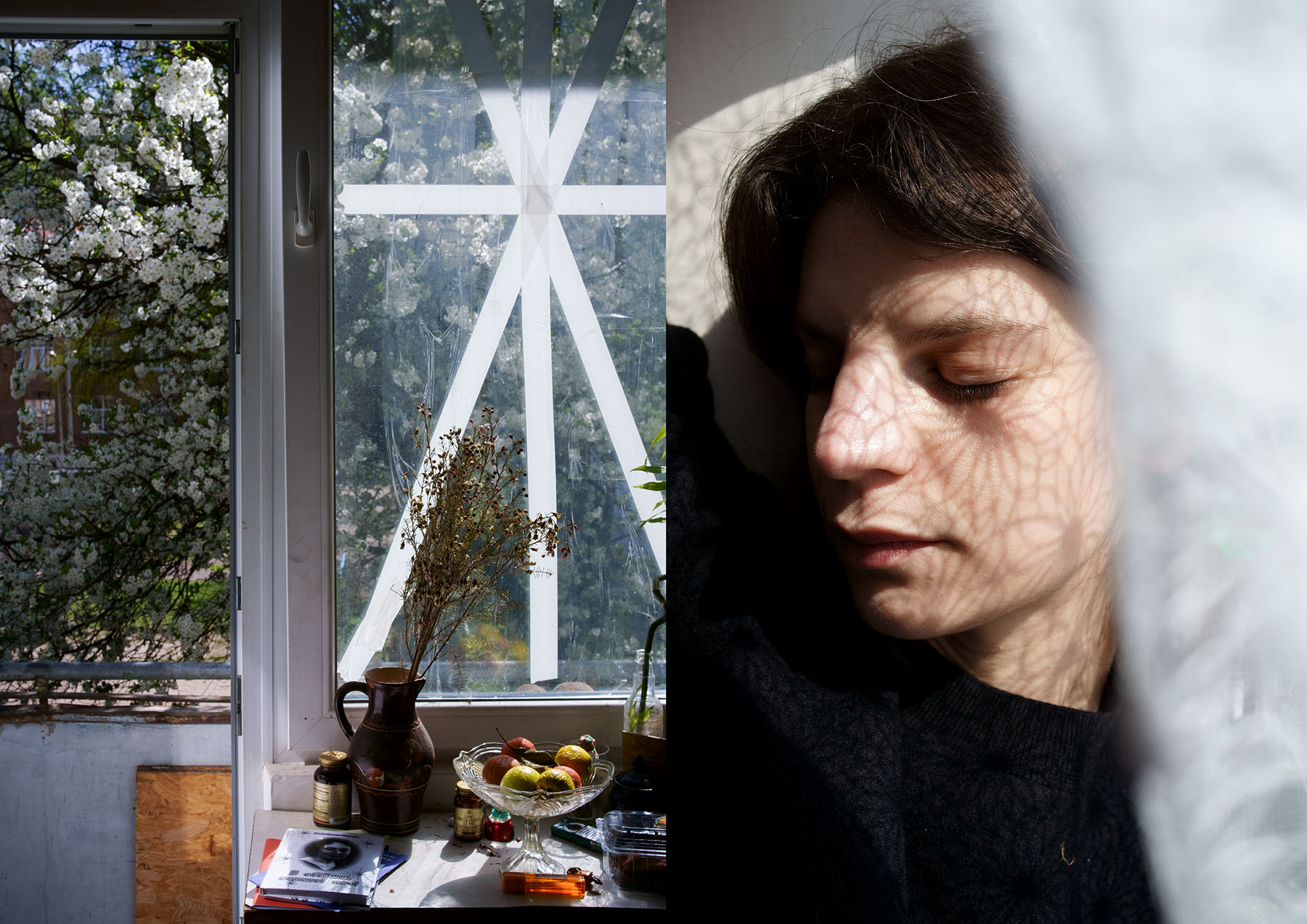We Don't Want to See This Anymore
The importance of photography in capturing reality, especially in times of war, cannot be overstated. Equally difficult to deny is the process of normalization and increasing fatigue from war, which accumulates proportionally to the volume of traumatic images. "Bearing witness to the pain of others" also demands resources.
Those whom I portray in the series "We Don't Want to See This Anymore" know war not only from photos. They are the ones who are in Ukraine during the full-scale russian invasion — soldiers, internally displaced persons, artists, cultural managers, dancers, and musicians. They all live their daily lives during the war. Lives interrupted by shelling, loss of home, loved ones, absence of a predictable future, but one that can look (and sometimes strive to be) like ordinary life.
One of the most recognizable portraits in the history of world documentary photography — Steve McCurry's "Afghan Girl" and a number of other iconic portraits that can compete with it in impact — primarily strike us with the penetrating gaze of the subjects, people whose eyes bear witness to encounters with horror.
All the heroes in my photographs have their eyes closed. This leaves the viewer without visual contact with the heroes, depriving them of their gaze — the most powerful, infallible tool of interaction or manipulation, enhancing the sense of intimacy of what is happening in the frame, and along with it — the viewer's inevitable detachment from it. The heroes are immersed in their own experience, they are one-on-one with it. Semi-ghostly, in this intermediate state and twilight, their images can evoke anxiety. Everything seems fine, but what's wrong — is it fatigue, sleep, unconsciousness, death?
"Shut your eyes and see" refers to Joyce's "Ulysses" by Georges Didi-Huberman in his book "What We See, What Looks at Us," specifically in reflections on the tactility of the visible. I would like this series of portraits to transport us to this space of touch, a space of sensory, sensitive (overly sensitive?) perception. Somewhere here, very close by, a warning message generated by the caring algorithm of social networks will appear soon: "Sensitive content" — be cautious. Maybe you don't want to see this anymore.
Text by Natalia Matsenko
Ми більше не хочемо на це дивитися
Важко було би переоцінити значення фотографії у фіксації дійсності, тим паче, коли йдеться про дійсність війни. Так само важко було б заперечити процес нормалізації та наростання втоми від війни, яка накопичується пропоційно до масиву травмуючих зображень. “Спостереження за болем інших” теж вимагає ресурсу.
Ті, кого я портретую у серії “Ми більше не хочемо на це дивитися” знають війну не лише з фото. Це ті, хто знаходиться в Україні під час повномасштабного російського вторгення — військові, внутрішньо переміщені особи, художники і художниці, культурні менеджерки, танцівники та музиканти. Усі вони живуть своє повсякденне життя під час війни. Життя, перемежоване обстрілами, втратами дому, близьких, відсутністю передбачуваного майбутнього, але такого, що може виглядати (а часом прагне бути) звичайним життям.
Один із найвпізнаваніших портретів в історії світової документалістики — “Афганська дівчина” Стіва МакКаррі та низка інших знакових портретів, що можуть конкурувати з ним за впливом, вражають насамперед пронизливим поглядом портретованих, людей, в чиїх очах закарбована зустріч із жахом.
Усі ж герої на моїх світлинах — із заплющеними очима. Це залишає глядача без зорового контакту з героями, позбавляючи їхнього погляду — цього найпотужнішого, безпрограшного інструменту взаємодії або маніпуляції, підсилюючи відчуття інтимності того, що відбувається в кадрі, а разом із цим — неминучої відстороненості глядача від цього. Герої занурені у власний досвід, вони сам-на-сам із ним. Напівпримарні, в цьому примежовому стані і світлотіні, їхні образи здатні викликати тривогу. Все ніби в порядку, але що не так — це втома, сон, непритомність, смерть?
“Shut your eyes and see” — посилається на Джойсового “Улісса” Жорж Діді-Юберман у книзі “Те, що ми бачимо, те, що дивиться на нас”, а саме в міркуванні про тактильність видимого. Я би хотіла, щоб серія цих портретів перемістила б нас у цей простір дотику, простір чуттєвого, чутливого (надто чутливого?). Десь тут, зовсім поряд, от-от зʼявиться повідомлення-попередження, згенероване турботливим алгоритмом соціальних мереж: “Sensitive content”, — будьте обачні. Можливо, ви більше не хочете на це дивитися.
Авторка тексту: Наталія Маценко



















